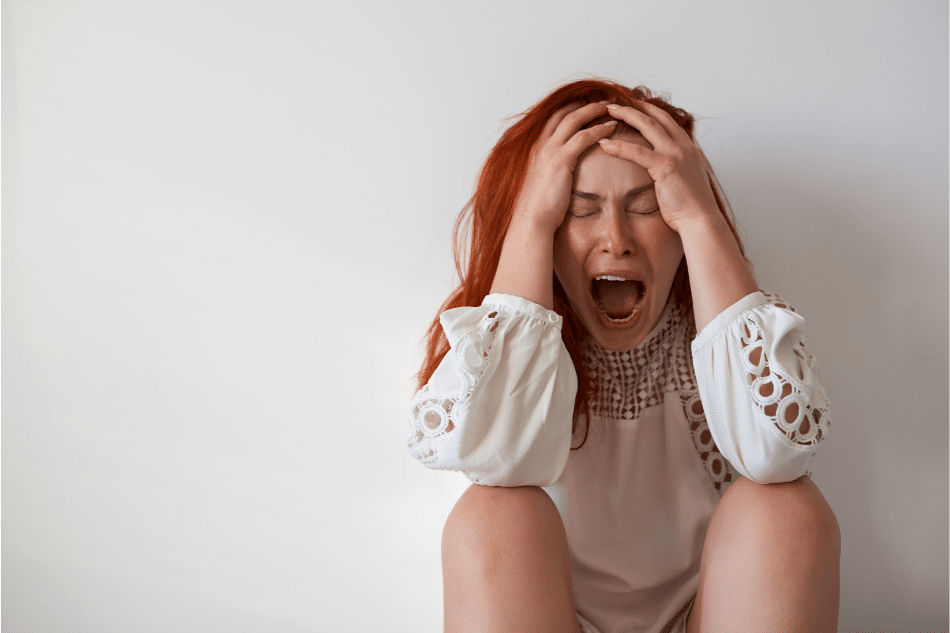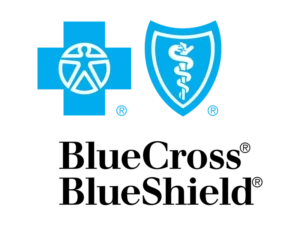Urgent Psychiatric Care Referrals for Teens: Safeguarding Teen Mental Health

When a teen experiences a mental health crisis, families are usually filled with fear and uncertainty. Often, during these times, urgent psychiatric care referrals become a lifeline for both a teen and their family.
These referrals can connect teens with immediate psychiatric help and give parents some understanding of what’s happening when everything seems to be falling apart.
Statistics show that nearly 20% of children between the ages of 3 and 17 have a mental, developmental, emotional, or behavioral disorder – or even suicidal behaviors.¹ Sadly, not all of those affected get the care they need. Instead, they may slip through the cracks. For this reason, around 20% of adolescents report having unmet mental health needs.²
Based on these figures, the importance of urgent psychiatric care referrals is clear; they not only provide immediate support but can help connect teens and families to continued care.
If you’re concerned about your teen’s mental well-being, a mental healthcare provider such as Mission Prep can support you – from psychiatric triage and residential programs to family-centered support and therapy. The goal is to respond to a crisis and build a foundation for recovery that lasts through adolescence and into adulthood.
This guide can also help, as it explores the urgent psychiatric care referral process by covering:
- When urgent psychiatric care referrals for teens are required
- What teen psychiatric care referrals involve
- Types of mental health treatment for teens post psychiatric clinic visits
- Coping strategies for both parents and teens after a psychiatric emergency
- How Mission Prep can help with teen psychiatric recovery

When Are Urgent Psychiatric Care Referrals for Teens Required?
Urgent psychiatric care referrals for teens are usually needed when safety is at risk. This might look like:
- Suicidal thoughts
- Severe self-harm
- Intense aggression
- Sudden inability to manage school or daily life
- Rapid mood and behavior changes that feel too big to manage at home
In such cases, emergency inpatient care for high-risk youth often becomes the next step. It can provide immediate stabilization in a safe environment where the risk of harm is reduced.
Once stabilized, many teens are referred to inpatient programs after psychiatric emergencies. These programs focus on helping adolescents process what happened, learn coping tools, and transition into therapies that support long-term stability.
Knowing how urgent care clinics refer adolescents can help families better understand the process. Urgent care teams look at safety first, then connect teens to the level of treatment they need, whether this means inpatient care, partial hospitalization, or a residential setting. The following section takes a more in-depth look at this process.
How Do Urgent Psychiatric Care Referrals for Teens Work?
When a teen is in crisis, most families seek help from one of two places: urgent care or the emergency room.
The first step in treating a crisis is what’s called a “triage evaluation.”³ This evaluation simply involves a doctor or mental health professional talking with your teen, asking about what’s happening, and making sure they are safe in the moment. If there’s a risk of suicide, self-harm, or other danger, the clinician may recommend inpatient care following ER psychiatric referral. This is a formal way of saying, “Your teen needs to stay in the hospital or a psychiatric unit for now, until it’s safe to bring them home.”
After this initial step, some teens are moved into psychiatric triage and residential programs. These are short-term programs where teens can calm down, receive care, and slowly get back on track before going into regular outpatient therapy. Think of them as temporary resting spaces between the hospital and everyday life.
Without this kind of support, it’s easy for teens to go home too quickly and end up back in crisis. For instance, research shows that readmission rates often range between 11% and 65% within the first year of discharge.⁴ Programs like the ones mentioned help create mental health continuity after crisis admission, so recovery doesn’t stop when a teen leaves the ER.
Even though families are supported throughout the referral process, it can still feel confusing and overwhelming. At Mission Prep, we take time to explain each step, answer questions, and make sure parents understand what’s happening. A referral is the beginning of a recovery plan that can lead to more stability for the entire family.
Types of Mental Health Treatment Post Psychiatric Clinic Visit
Families usually want to know what the next step is after the teen has been stabilized in the ER or urgent care. This is where mental health treatment post psychiatric clinic visit becomes critical. It’s the next step in recovery, helping teens move from stabilization into healing.
Every teen’s needs are different, so treatment plans vary. Below are some of the most common therapies and programs used to support adolescent stabilization after urgent care and prevent another crisis.
DBT for Suicidal Teens After Crisis
One effective approach for high-risk teens is DBT for suicidal teens after crisis. DBT, or dialectical behavior therapy, is a structured program that teaches skills in four main areas:⁵
- Mindfulness
- Distress tolerance
- Emotion regulation
- Interpersonal effectiveness
DBT is often recommended for teens who struggle with suicidal thoughts or self-harm as it targets intense emotions. Sessions involve learning step-by-step tools to work through overwhelming moments without defaulting to harmful behaviors. DBT is often introduced early in teen psychiatric recovery programs to provide immediate, usable skills.
Cognitive Behavioral Therapy (CBT)
Another widely used approach after crisis is cognitive behavioral therapy. CBT helps teens identify unhelpful thought patterns like I’ll never get better or Everyone is against me, and replace them with healthier, more realistic ways of thinking.
CBT is especially helpful for teens dealing with anxiety, depression, or the lingering effects of a crisis.⁶ This is because it can give them a sense of control over their thoughts and behaviors, which can be empowering after a period of feeling powerless. Therefore, many post-crisis mental health services for youth use CBT as a foundation for treatment because it’s evidence-based and flexible.
Horticultural Therapy
Some teens don’t relate to traditional therapy in an office. For these teens, horticultural therapy may be helpful. Horticultural therapy (using gardening and interaction with nature as part of recovery) can help teens reconnect with the world around them in calming and meaningful ways.
Planting, tending, and caring for living things has been shown to reduce stress, encourage mindfulness, and give teens a sense of responsibility and growth.⁷ Therefore, for adolescents recovering from a psychiatric emergency, spending time in nature can be grounding and restorative. It can also be used to complement more structured therapies.
Art Therapy
Art therapy allows teens to express feelings that may be too difficult to put into words. Through drawing, painting, or other creative activities, teens can process trauma, anxiety, or sadness in a safe environment.⁸
This approach can be particularly effective for those who feel “talked out” after a crisis or who struggle to verbalize what they’re experiencing after trauma. For this reason, art therapy is often built into teen psychiatric recovery programs as an additional outlet for healing.
Family Therapy and Supportive Programs
Because a crisis affects the entire family, family therapy is often part of mental health treatment post psychiatric clinic visit. These sessions give parents and siblings space to share their perspectives, learn new communication tools, and work through challenges together.⁹
For many teens, these treatment options may be built into partial hospitalization programs or intensive outpatient care. These teen psychiatric recovery programs allow them to spend part of the day in structured treatment and part of the day at home, balancing support with independence.
Coping Strategies After Psychiatric Emergencies for Teens and Parents
A psychiatric emergency doesn’t end when a teen is discharged from urgent care or the hospital. The days and weeks afterward can feel fragile for everyone involved. This is when clear, practical strategies can make a big difference; families who know what to focus on are better equipped to support recovery and prevent setbacks.
The following sections cover coping strategies for teens and parents to help them navigate the weeks after urgent psychiatric care.
Coping Strategies for Teens
Teens often come out of a crisis feeling raw, exhausted, or unsure of themselves. Having tools you can turn to could make it easier to cope with everyday stress without slipping back into harmful patterns. The following strategies, for instance, may help:
- Stick to a daily routine: Consistent sleep, meals, and activity times can give structure when everything else feels unpredictable. A steady rhythm is one of the simplest ways to reduce anxiety.¹⁰
- Practice emotional regulation for recently stabilized teens: Skills like deep breathing, grounding exercises, mindfulness, or writing down feelings in a journal can help you manage overwhelming emotions before they spiral.¹¹
- Ease back into responsibilities: Schoolwork, chores, and social activities may need to be reintroduced slowly. This may help prevent you from feeling overloaded right after stabilization.
- Stay connected to supportive peers: Maintaining involvement in safe friendships, youth groups, or recovery-focused programs may give you a sense of belonging and reduce isolation.
- Set gentle limits for yourself: Too much screen time, late nights, or high-stress activities can undo progress.
These strategies don’t replace therapy or structured programs, but they could give you a sense of control in daily life, which is essential after a crisis.
Coping Strategies for Parents
Parents can, understandably, also feel rattled by a psychiatric crisis. It’s normal to feel anxious about what might happen next or to second-guess every choice you make. However, building your own coping tools may help you support your teen without becoming burnt out. Techniques like the following might help:
- Seek family support after urgent mental health care: By opting in to parent education programs, therapy, and peer groups, you could reduce feelings of isolation and feel more supported in the referral process.
- Keep communication open: While your teen may not want to talk, it could help them to know that you’re available to listen and won’t judge them.
- Learn how urgent care clinics refer adolescents: You can minimize stress around the referral process if you know what to expect. Plus, a better understanding could also help you know how to be there for your teen.
- Take care of your own well-being: Exercise, adequate sleep, mindfulness, or attending your own therapy sessions may reduce stress and prevent burnout. You can’t support your teen if you’re completely drained.
- Set realistic expectations: Progress is often filled with ups and downs, but this doesn’t mean the strategies or programs aren’t working. It’s important to have healthy expectations of timelines and recovery.
Additionally, when parents take care of themselves, they model healthy coping for their teen. Recovery works best when both the teen and the parent have their own strategies for staying grounded.

Mission Prep: Professional Advice on Teen Psychiatric Recovery Programs
A psychiatric crisis can be highly unsettling for any family. Parents and siblings often leave the ER or urgent care wondering what the next step should be. How can they keep their teen safe? Where can they find support that’s right for the entire family?
At Mission Prep, we help families understand their care options, ranging from inpatient programs after psychiatric emergencies to structured outpatient supports and ongoing therapy. We help families understand their options, explain how these work, and make sure no one feels like they have to figure it all out alone.
Our programs focus on safety and growth. This may include adolescent stabilization after urgent care, skill-building therapies like DBT for suicidal teens after crisis, and family-centered approaches that strengthen communication at home. We also provide family support after urgent mental health care, so that parents have tools and encouragement for maintaining their own well-being.
Our team of professionals doesn’t see referrals as the end of a frightening chapter but as the beginning of recovery. With the right plan, teens can move from crisis to stability and begin building the resilience they need for the future. If your family is going through this process, reach out to learn more about our post-crisis mental health services for teens today.
References
- Agency for Healthcare Research & Quality. (2022). Child and adolescent mental health. https://www.ncbi.nlm.nih.gov/books/NBK587174/
- Centers for Disease Control and Prevention. (2025, June 10). Data and statistics on children’s mental health.https://www.cdc.gov/children-mental-health/data-research/index.html
- Aras, Ş., Varol Taş, F., & Baykara, B. (2014). Bir çocuk ve ergen psikiyatrisi polikliniğinde triyaj uygulaması. Noro Psikiyatri Arsivi, 51(3), 248–252. https://pmc.ncbi.nlm.nih.gov/articles/PMC5353131/
- Chen, A., Dinyarian, C., Inglis, F., Chiasson, C., & Cleverley, K. (2022). Discharge interventions from inpatient child and adolescent mental health care: A scoping review. European Child & Adolescent Psychiatry, 31(6), 857–878. https://pmc.ncbi.nlm.nih.gov/articles/PMC9209379/
- Kothgassner, O. D., Goreis, A., Robinson, K., Huscsava, M. M., Schmahl, C., & Plener, P. L. (2021). Efficacy of dialectical behavior therapy for adolescent self-harm and suicidal ideation: A systematic review and meta-analysis. Psychological Medicine, 51(7), 1057–1067. https://pmc.ncbi.nlm.nih.gov/articles/PMC8188531/
- Stanley, B., Brown, G., Brent, D. A., Wells, K., Poling, K., Curry, J., Kennard, B. D., Wagner, A., Cwik, M. F., Klomek, A. B., Goldstein, T., Vitiello, B., Barnett, S., Daniel, S., & Hughes, J. (2009). Cognitive-behavioral therapy for suicide prevention (CBT-SP): Treatment model, feasibility, and acceptability. Journal of the American Academy of Child & Adolescent Psychiatry, 48(10), 1005–1013. https://pmc.ncbi.nlm.nih.gov/articles/PMC2888910/
- Arola, T., Aulake, M., Ott, A., Lindholm, M., Kouvonen, P., Virtanen, P., & Paloniemi, R. (2023). The impacts of nature connectedness on children’s well-being: Systematic literature review. Journal of Environmental Psychology, 85,101913. https://www.sciencedirect.com/science/article/pii/S027249442200158X
- Riley, S. (2001). Art therapy with adolescents. Western Journal of Medicine, 175(1), 54–57. https://pmc.ncbi.nlm.nih.gov/articles/PMC1071468/
- Varghese, M., Kirpekar, V., & Loganathan, S. (2020). Family interventions: Basic principles and techniques. Indian Journal of Psychiatry, 62(Suppl 2), S192–S200. https://pmc.ncbi.nlm.nih.gov/articles/PMC7001353/
- Arlinghaus, K. R., & Johnston, C. A. (2019). The importance of creating habits and routine. American Journal of Lifestyle Medicine, 13(2), 142–144. https://pmc.ncbi.nlm.nih.gov/articles/PMC6378489/
- Balban, M. Y., Neri, E., Kogon, M. M., Weed, L., Nouriani, B., Jo, B., Holl, G., Zeitzer, J. M., Spiegel, D., & Huberman, A. D. (2023). Brief structured respiration practices enhance mood and reduce physiological arousal. Cell Reports Medicine, 4(1), 100895. https://pmc.ncbi.nlm.nih.gov/articles/PMC9873947/













